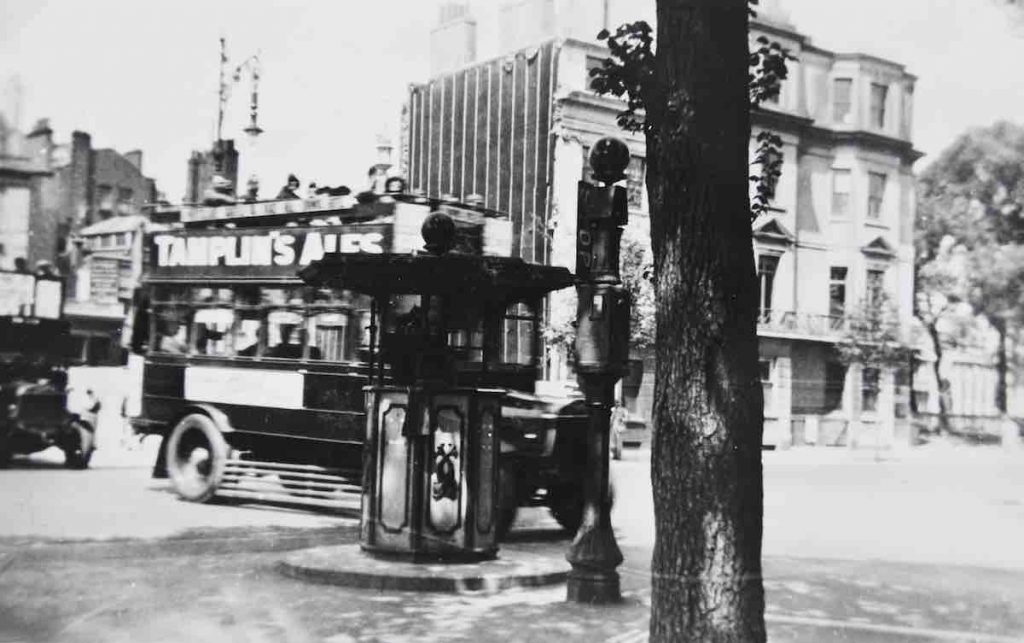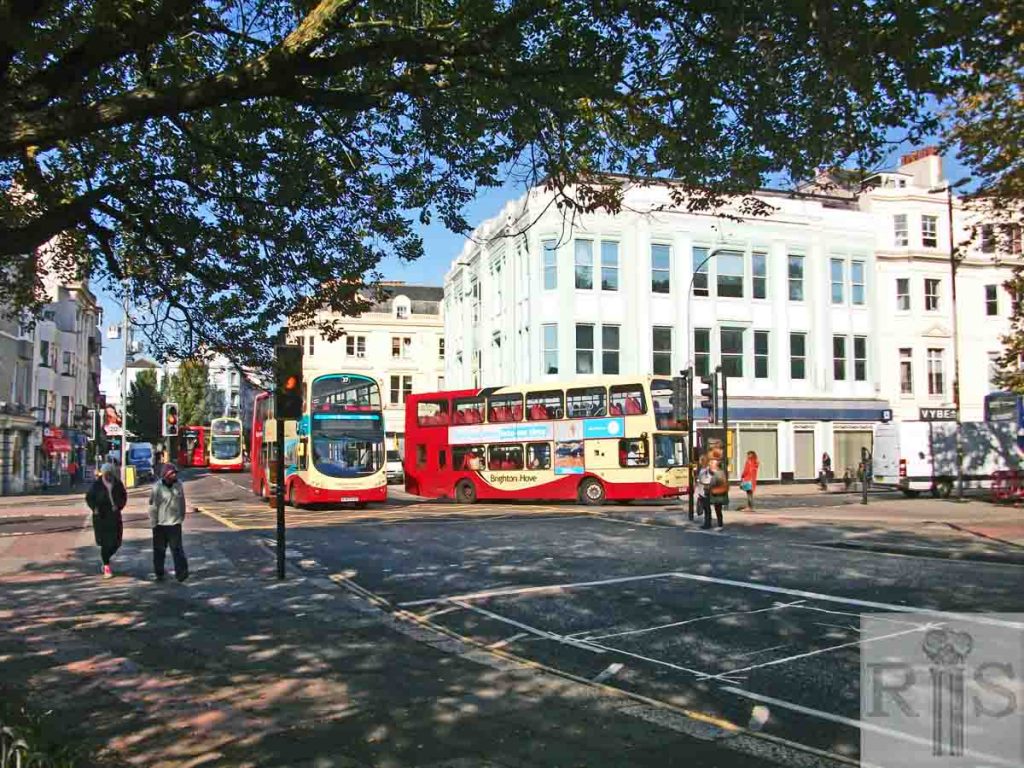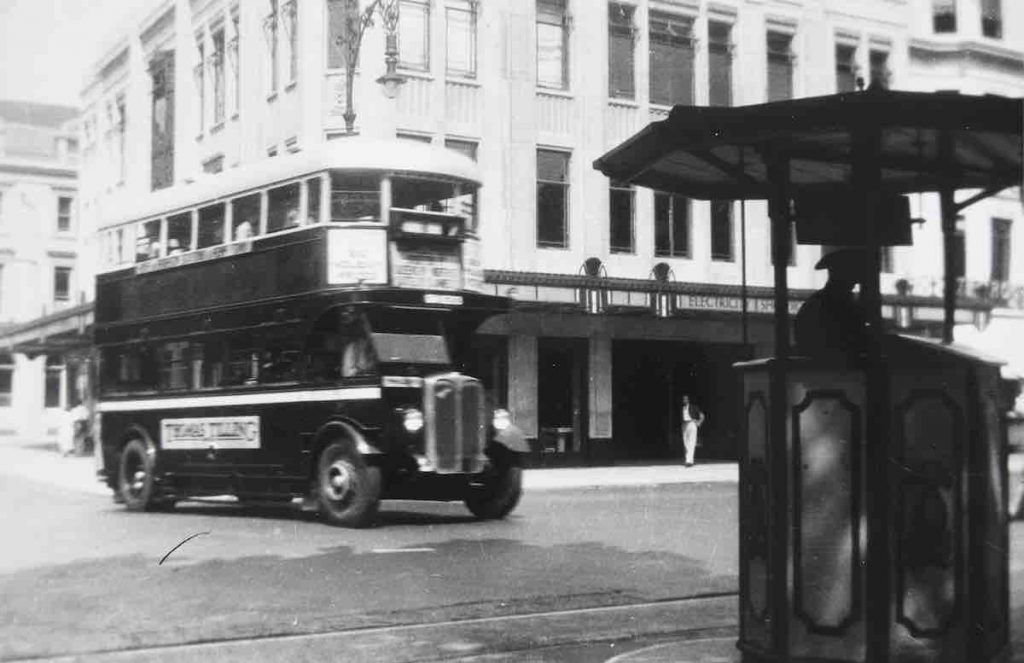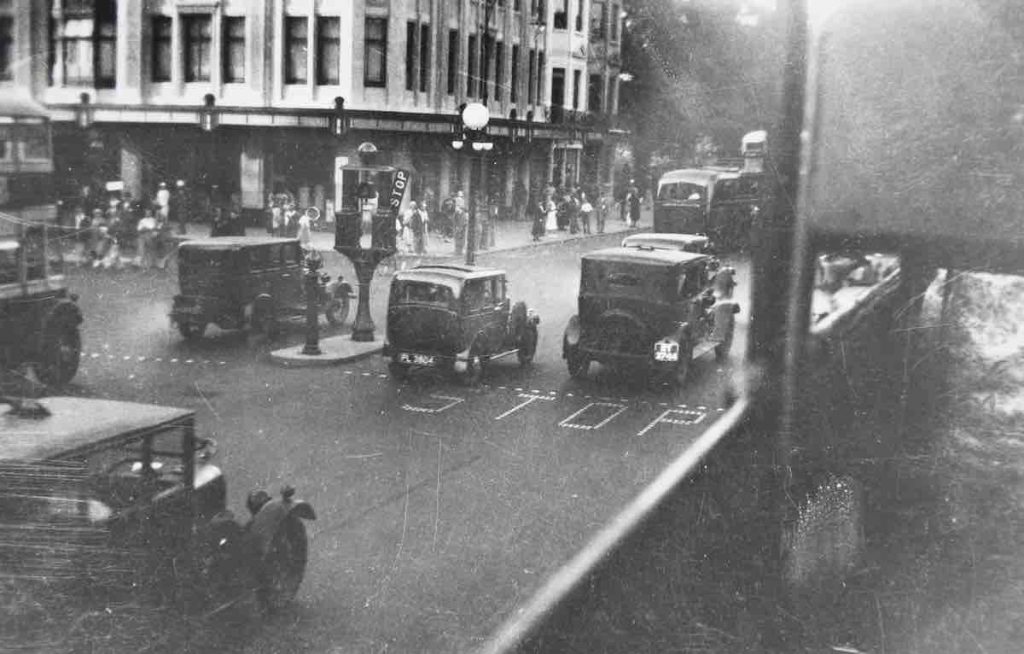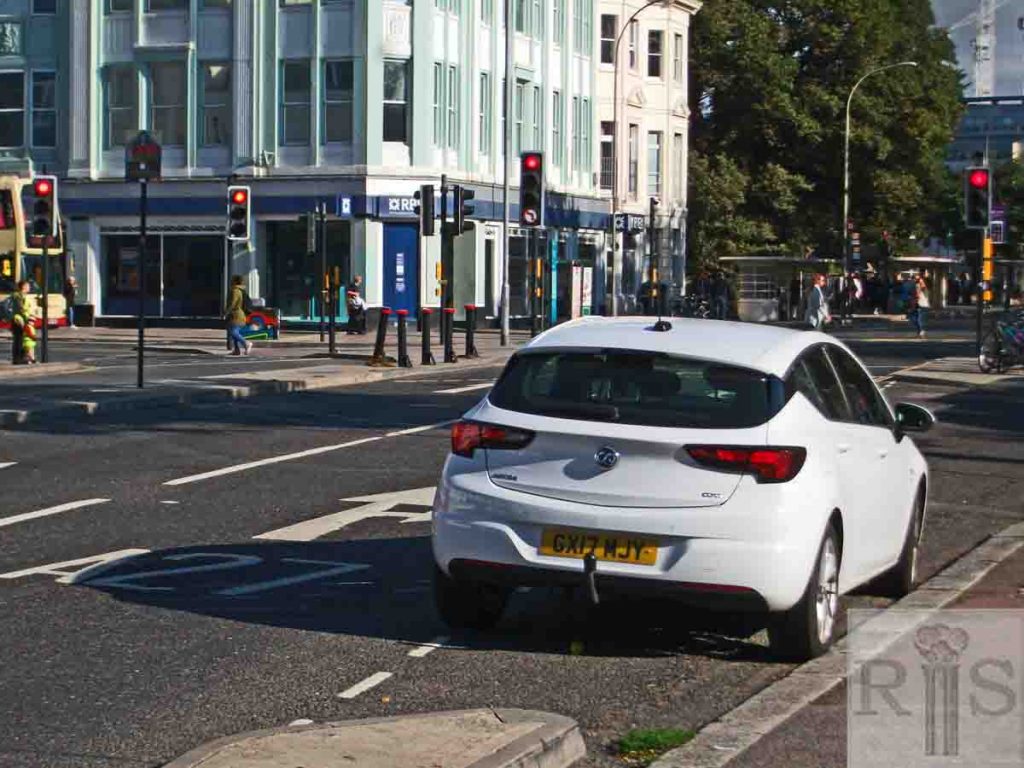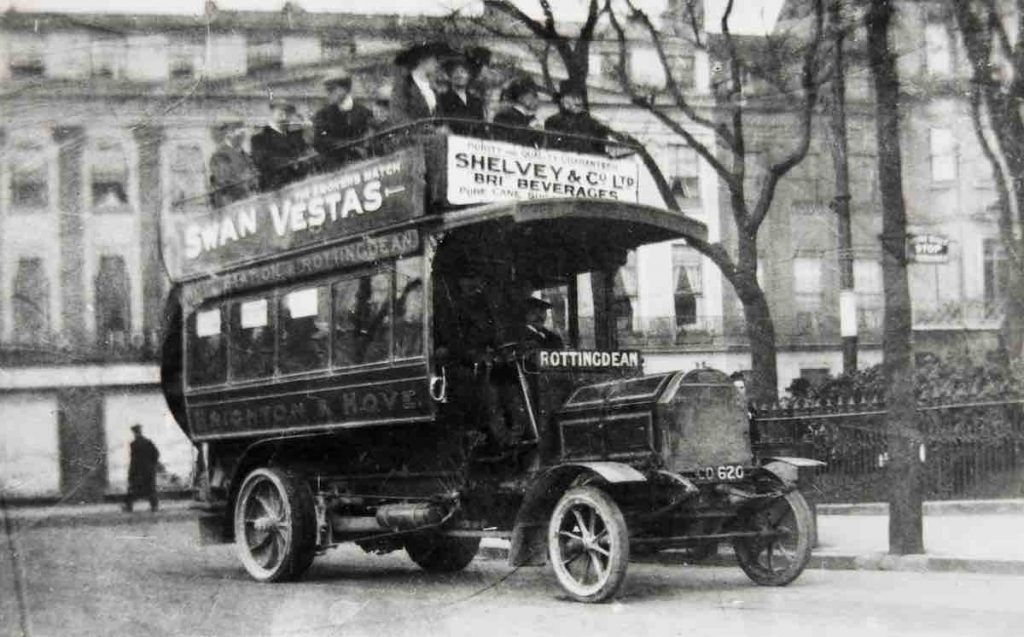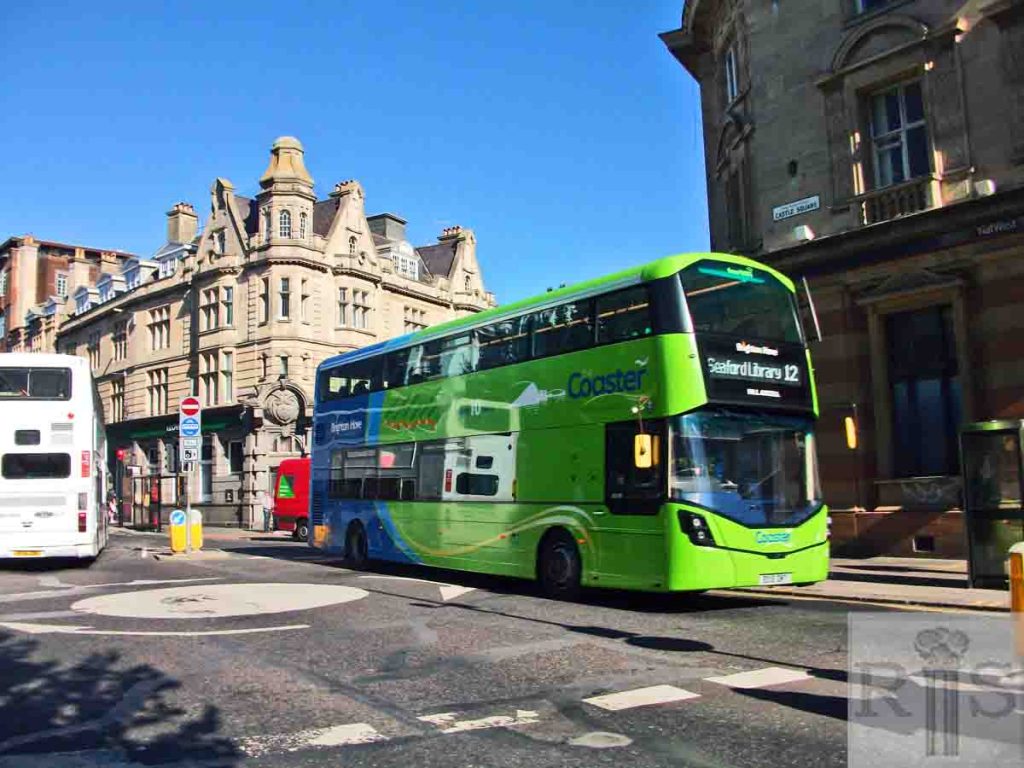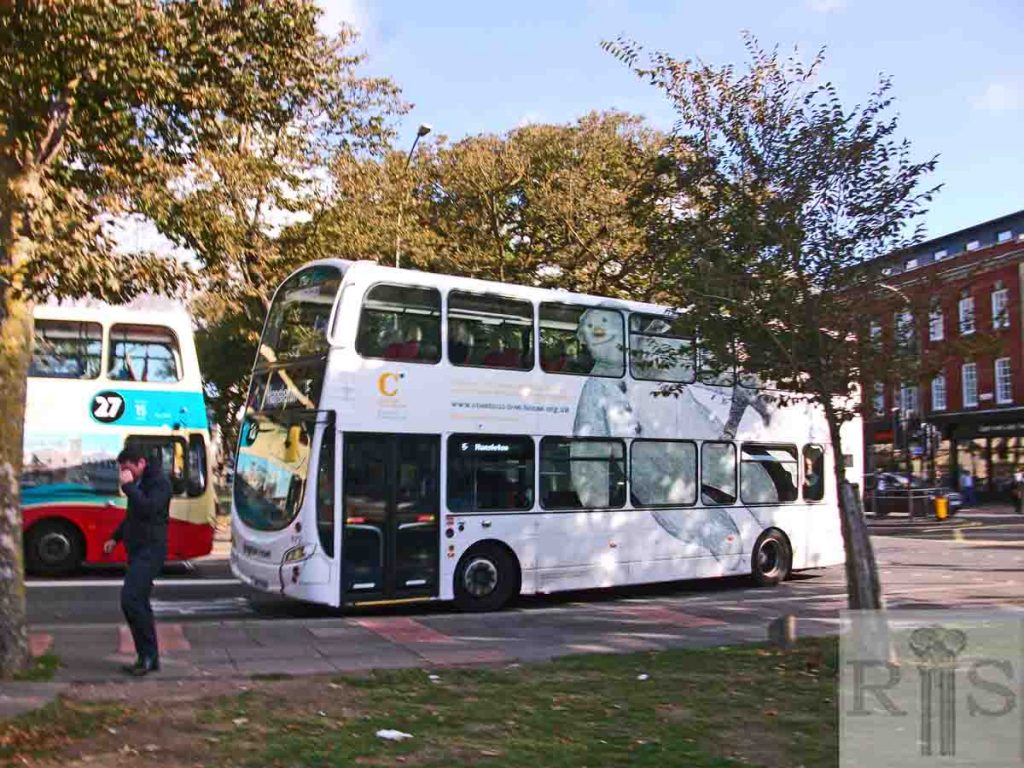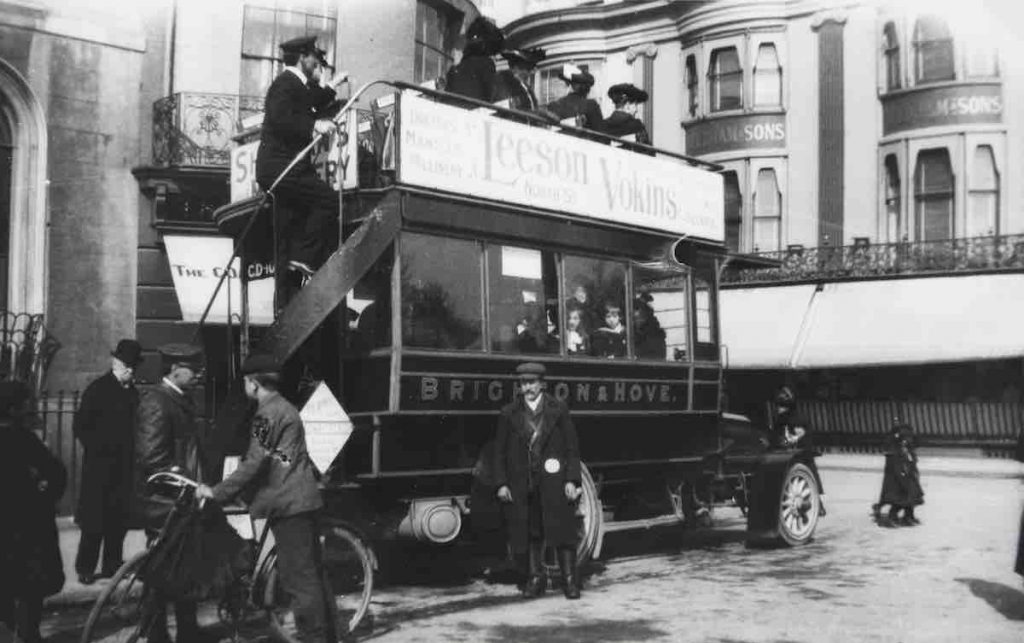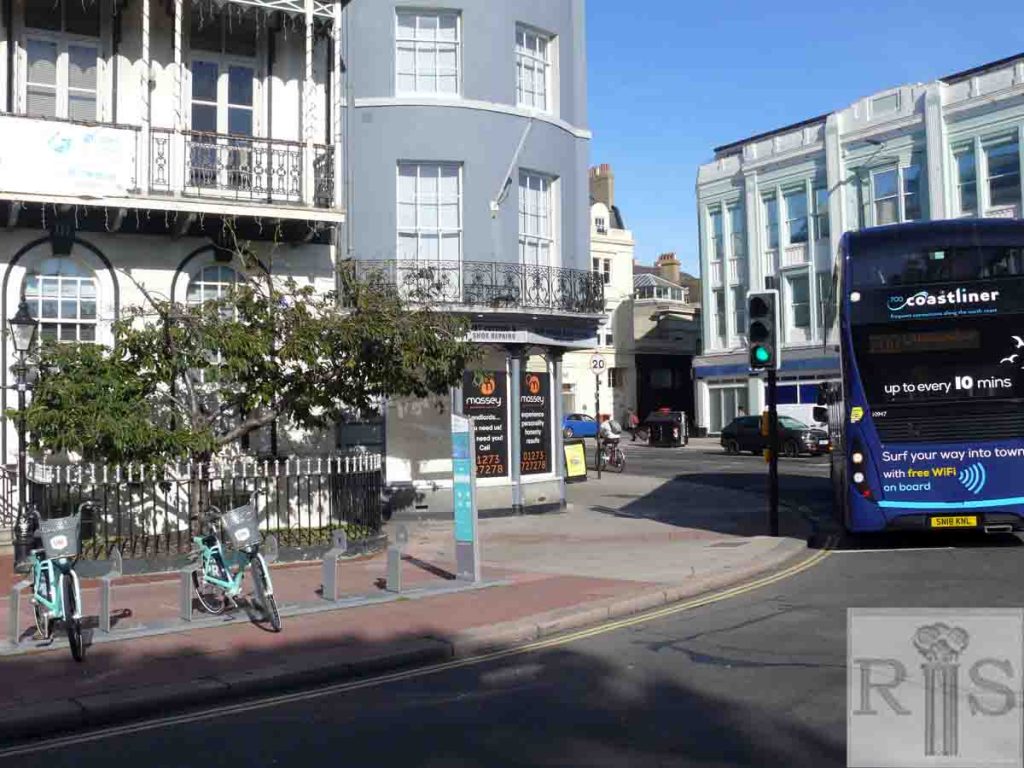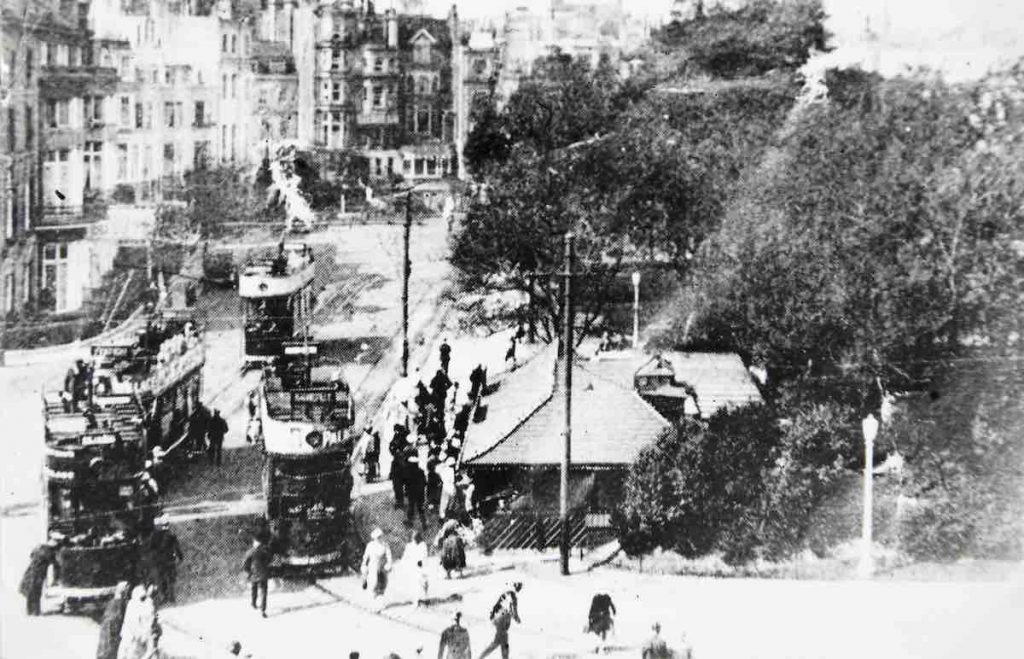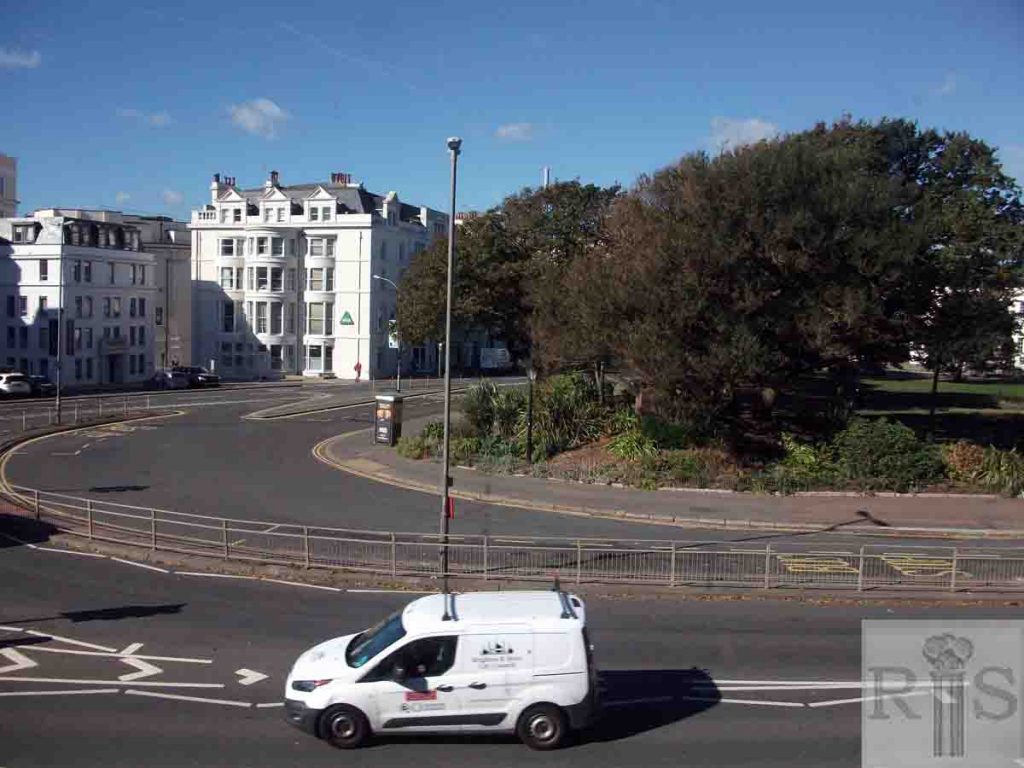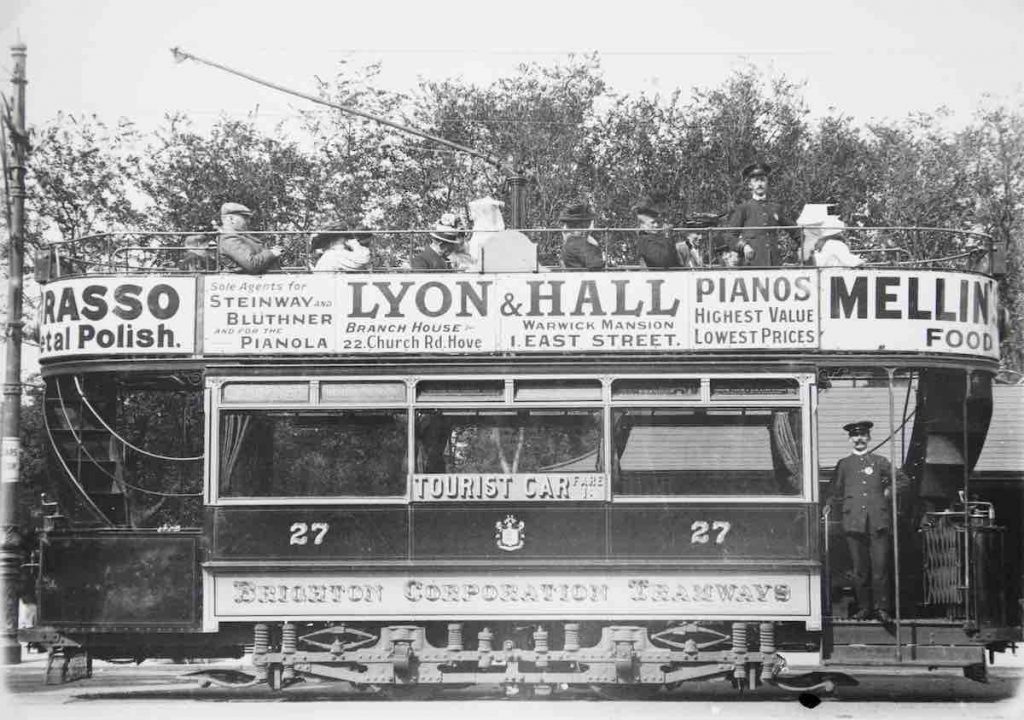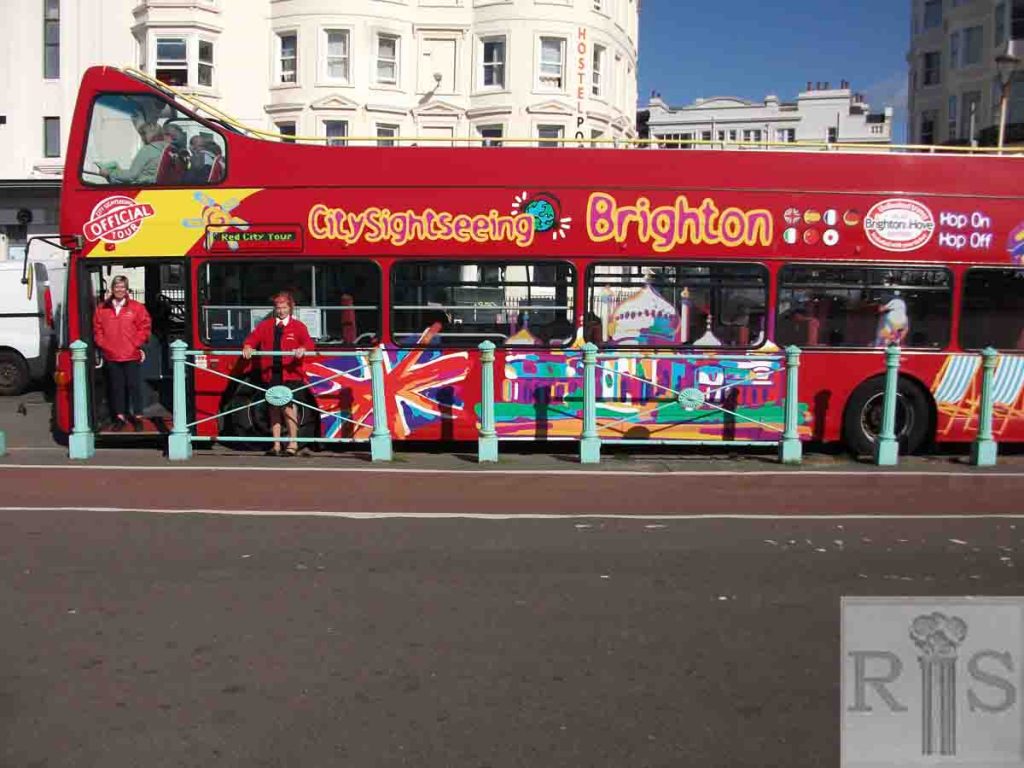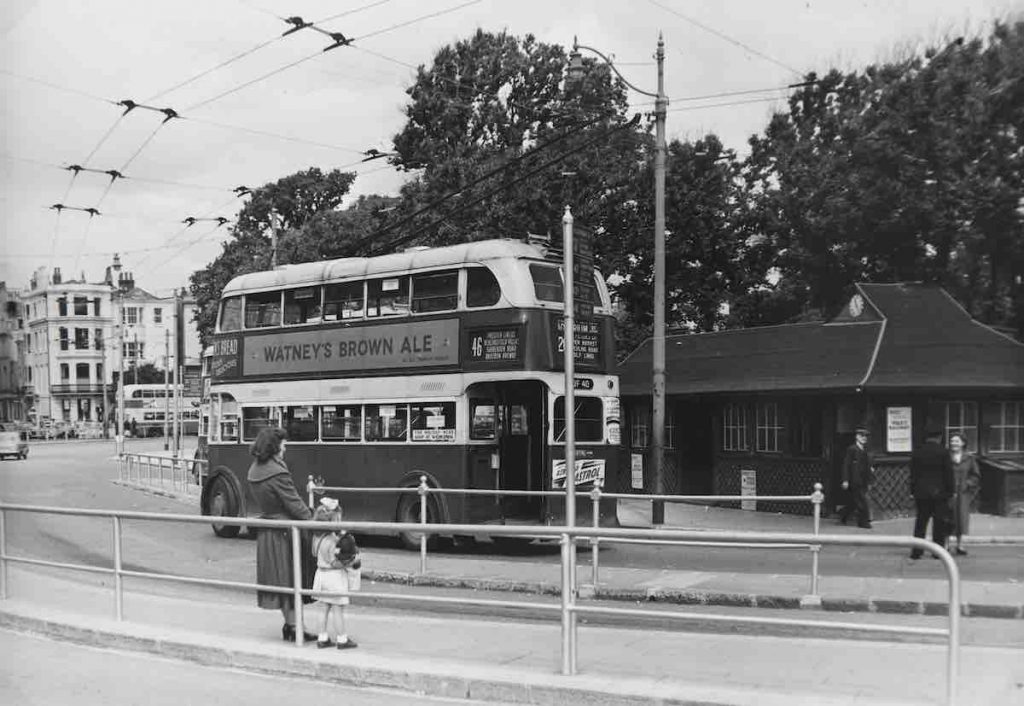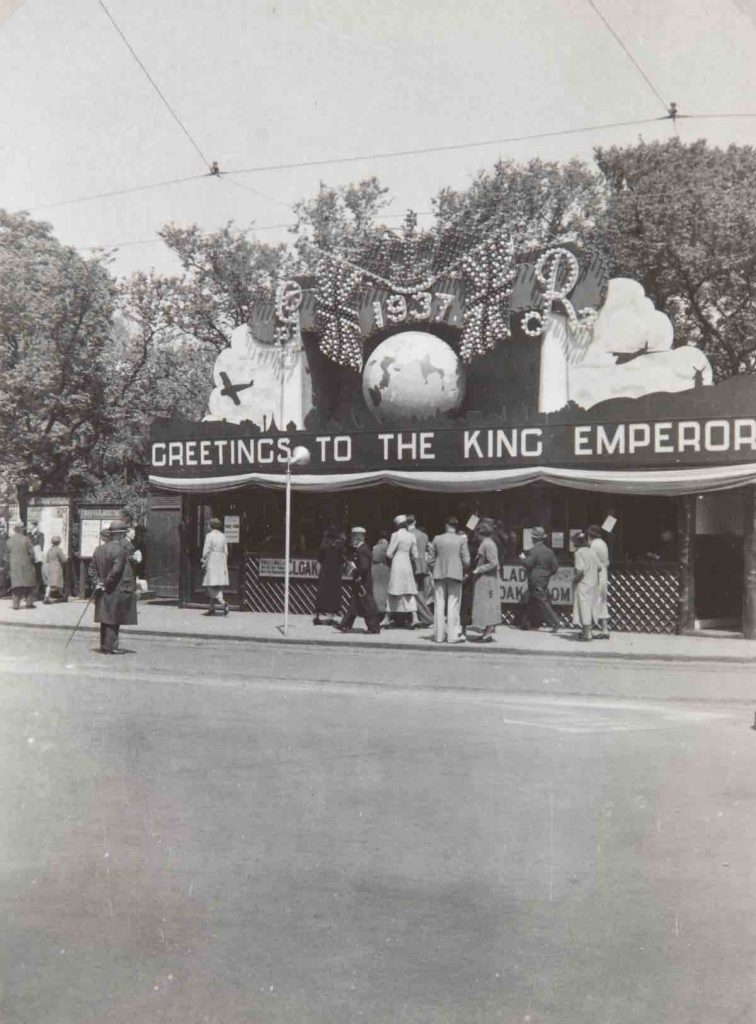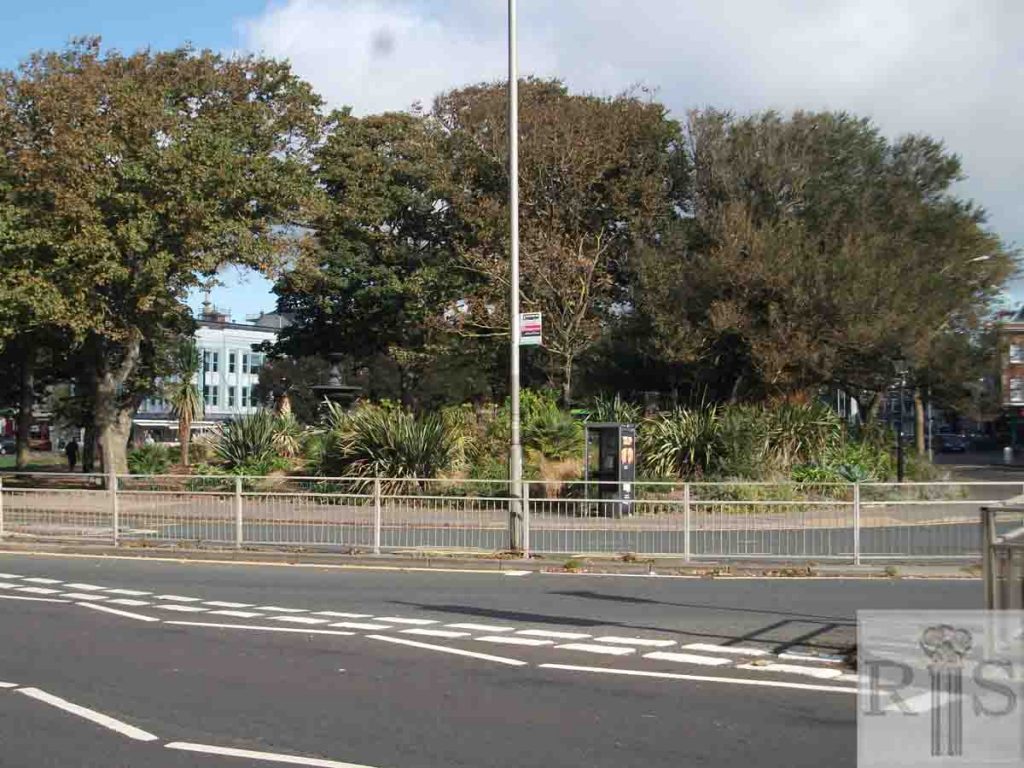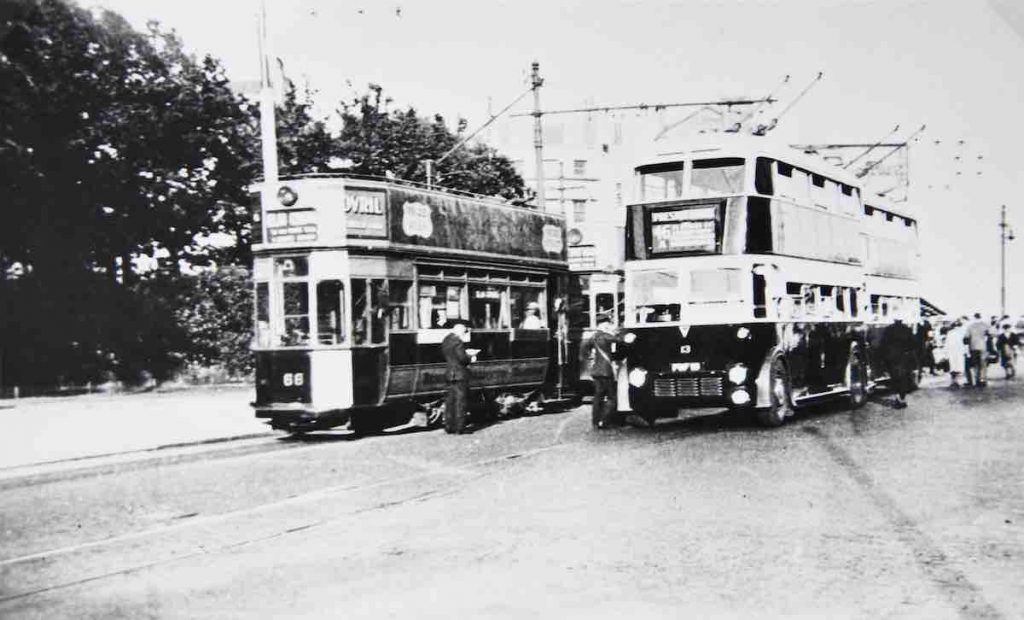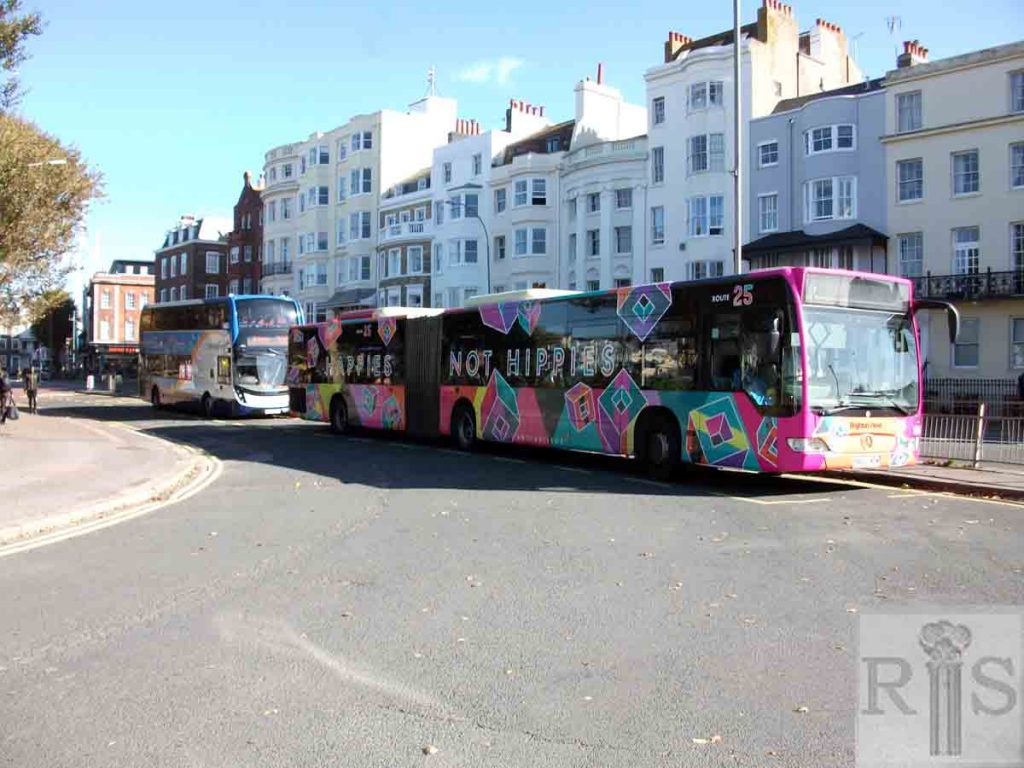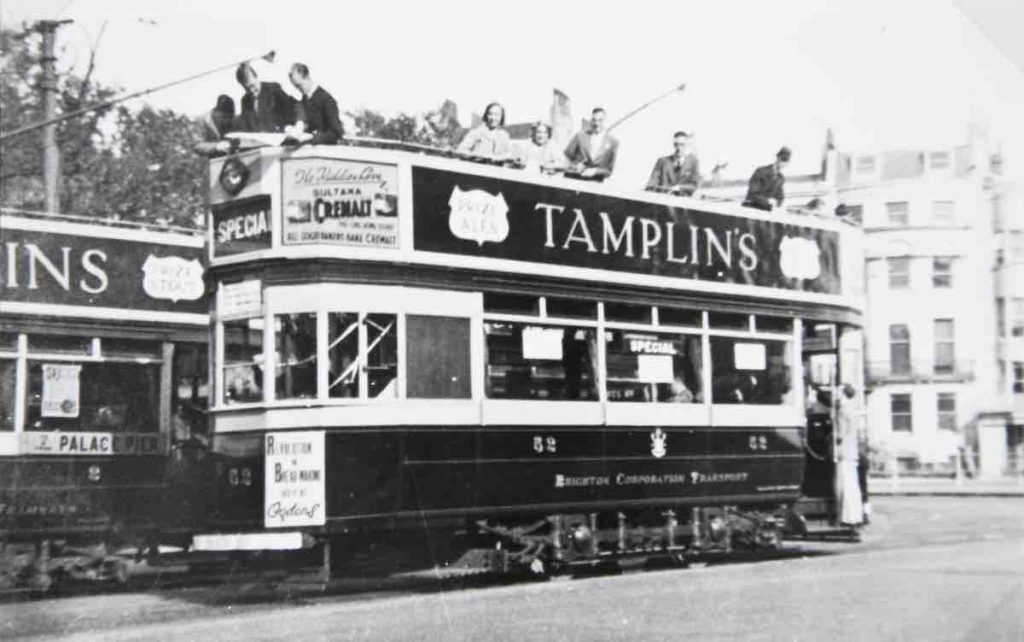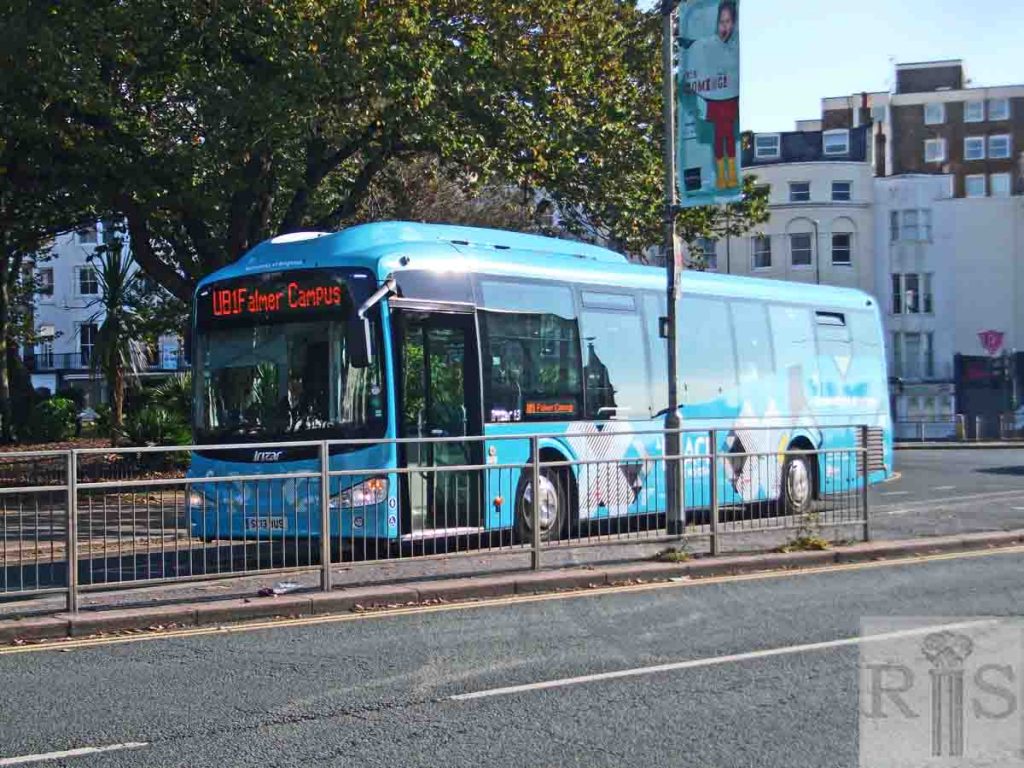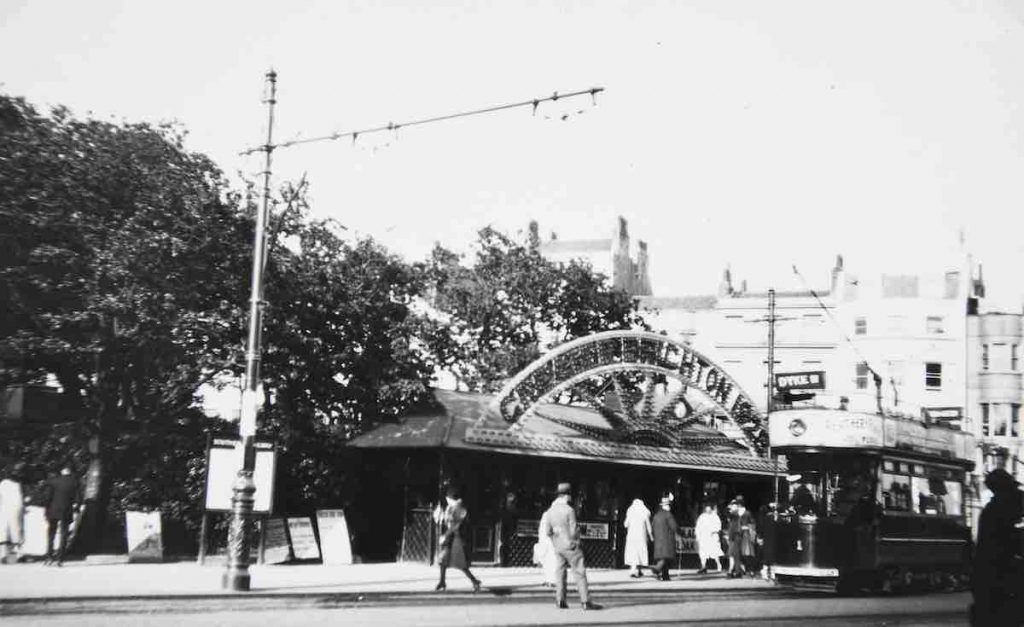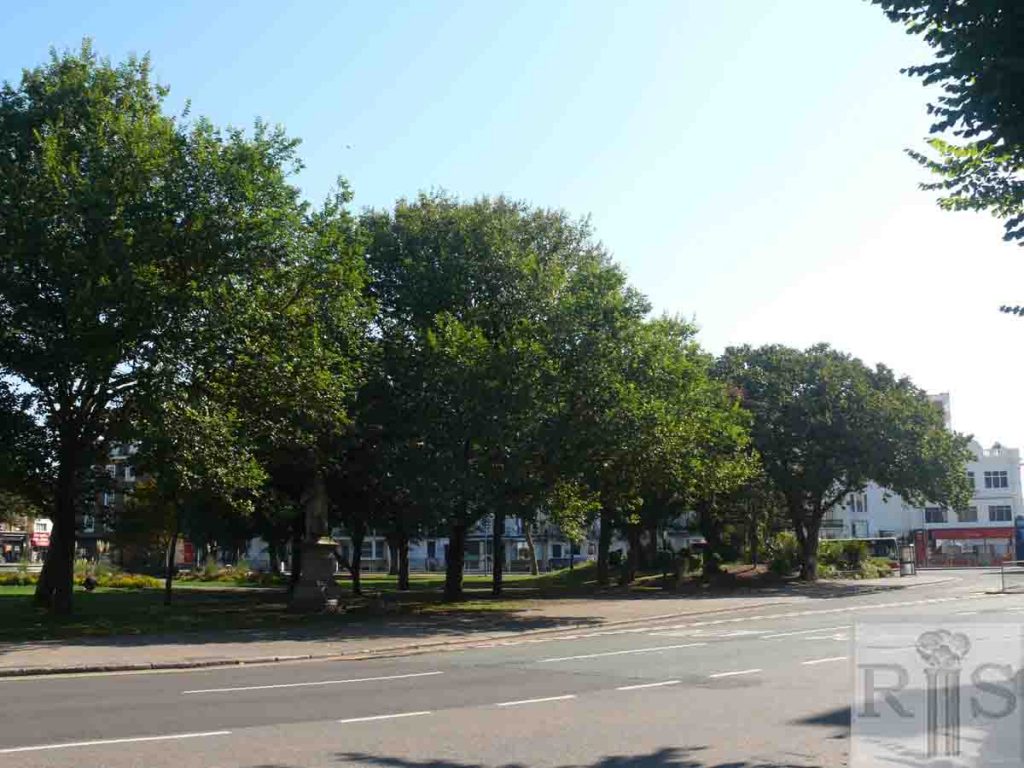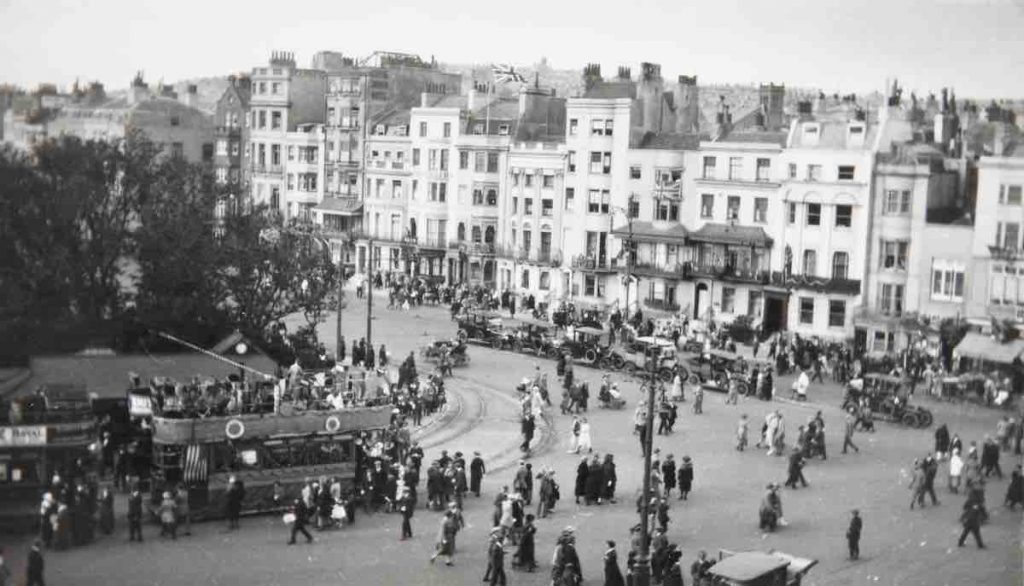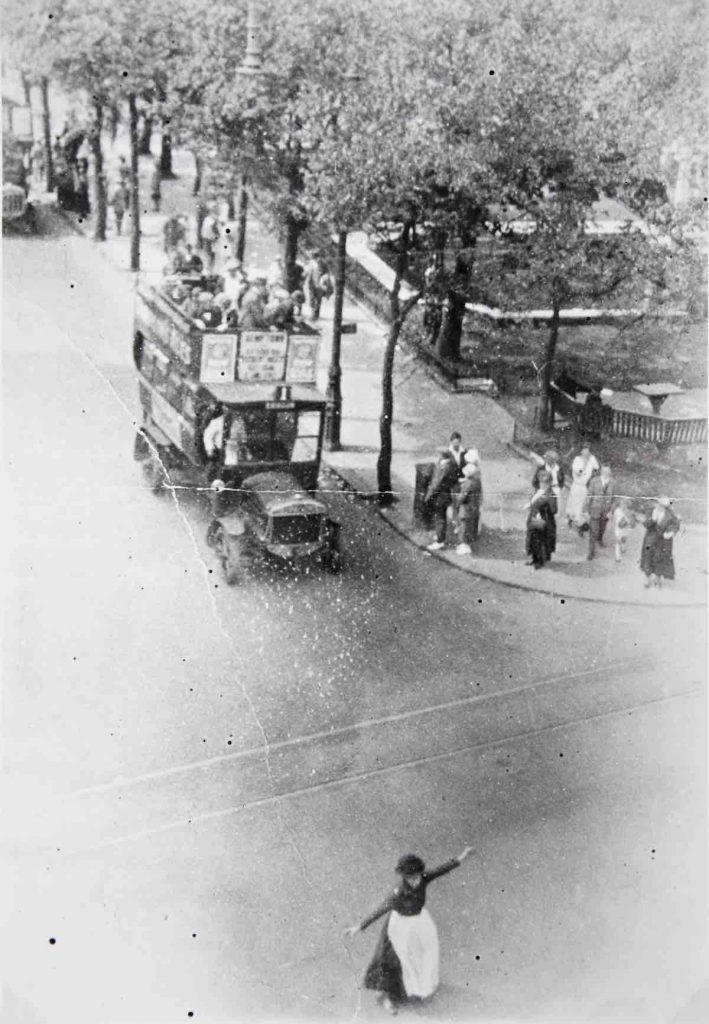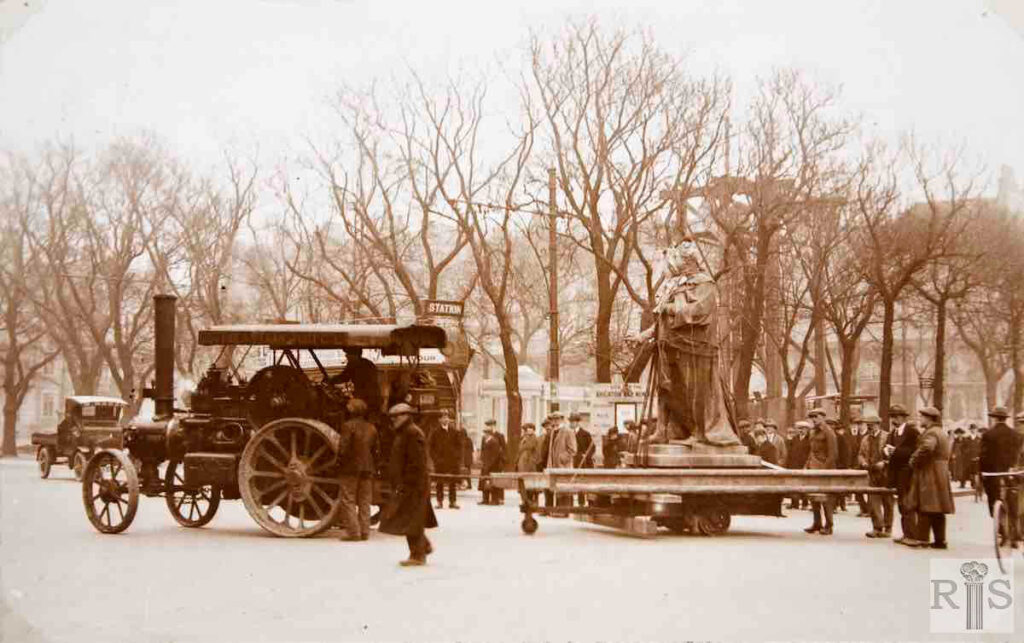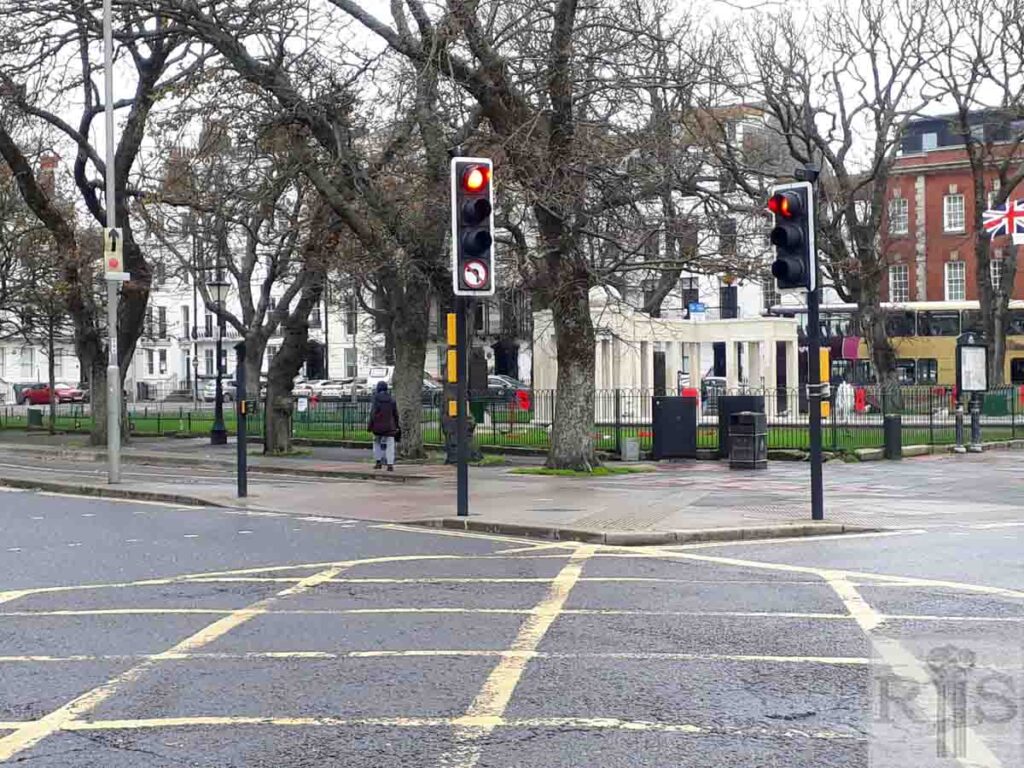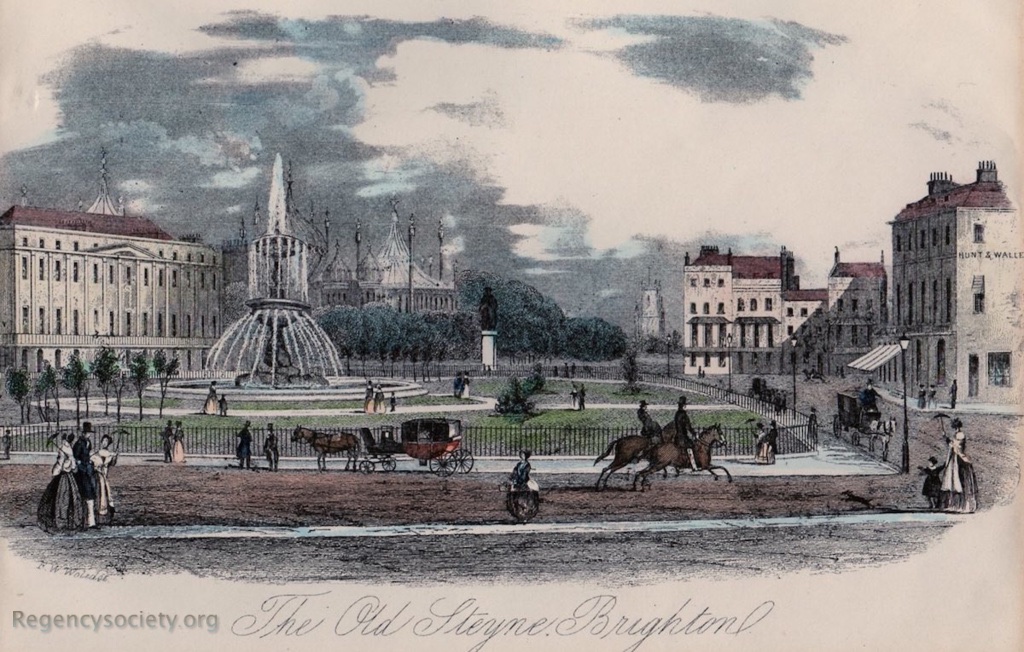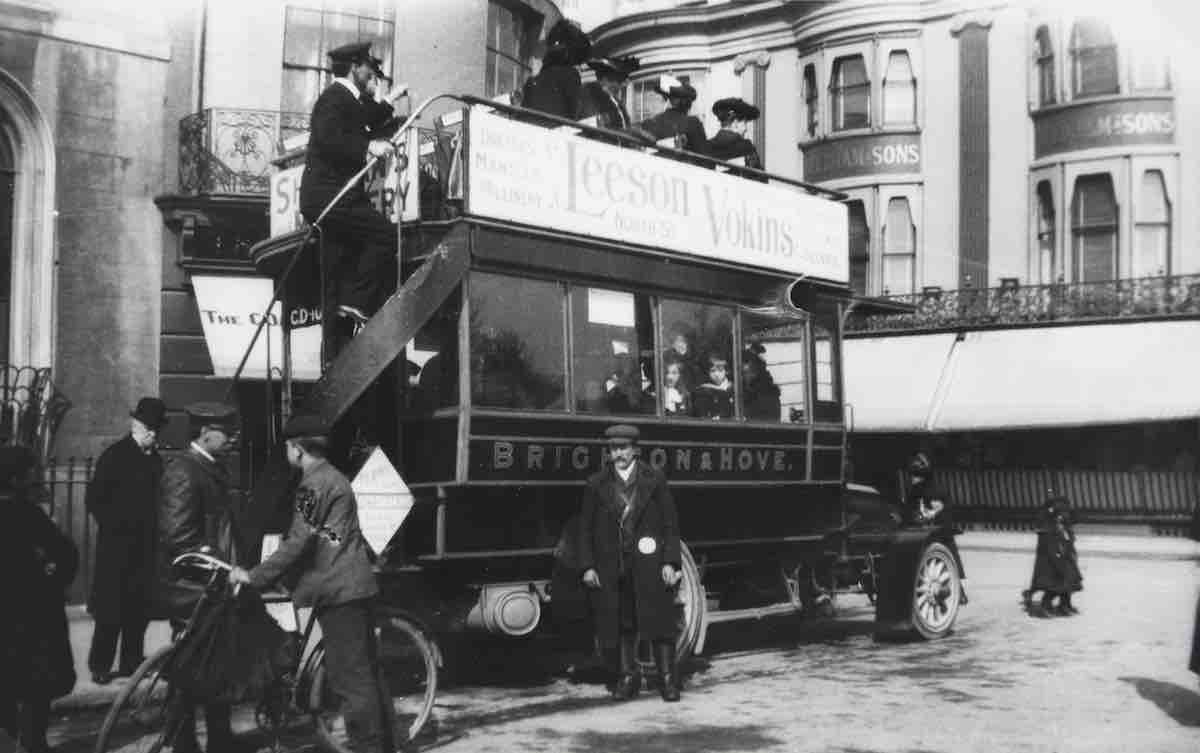
James Gray: The purpose of these photographs is not so much to show the buildings as the method of traffic control by the policeman with semaphore signal arms the forerunner of traffic lights. The scene is the junction of Castle Square and Old Steine. This view dates from 1931, after demolition of Needhams premises. jgc_10_046
2018: Traffic control is now managed by automated traffic lights and audio visual green man pedestrian signals at each crossing. As seen here, signals are placed at each junction of Castle Square and Old Steine.
James Gray: The purpose of these photographs is not so much to show the buildings as the method of traffic control by the policeman with semaphore signal arms the forerunner of traffic lights. The scene is the junction of Castle Square and Old Steine. This view of 1932 shows the new Electricity showrooms. jgc_10_047
2018: Traffic control is now managed via traffic lights with combined pedestrian stop / walk signals. The prominent building is now home to RBS – Royal Bank of Scotland. (Photographer: Jane Jordan)
James Gray: The purpose of these photographs is not so much to show the buildings as the method of traffic control by the policeman with semaphore signal arms the forerunner of traffic lights. The scene is the junction of Castle Square and Old Steine. This view of 1932 shows the new Electricity showrooms. jgc_10_048
2018: RBS Royal Bank of Scotland now occupies the electricity showrooms building. Smart traffic lights are equipped with cameras in addition to pedestrian crossing signals with green man audio for the visibly impaired. The lights can be monitored remotely and the red / amber / green cycle adjusted to aid traffic flow. (Photographer: Jane Jordan)
James Gray: The first motor bus to run to Rottingdean, Whit Monday, 1907 photographed in Old Steine, just opposite the site of the present War memorial. Needhams old outfitters shop forms the background. Passengers upstairs seem to be on a rather precarious perch, and considering the rough condition of the old road, the journey to Rottingdean must have been something of an adventure! jgc_10_050
2018: Today, the No 12 bus will take you to Rottingdean on its way to Seaford. Seen here heading east in Castle Square just in front of the old Needhams site. Passenger travel is far more comfortable and even includes USB charging points for today’s digital age.
James Gray: Brighton’s first motor bus, CD 103, at rest, facing west, in Old Steine. Judging by the new appearance of the vehicle, and the interest being aroused, the photograph could well have been taken in the early days of the bus’s operation in December 1903. It ran from Castle Square to Sackville Road, Hove, the fare being 2d (less than 1p today) for “any distance”. Oh, happy days! jgc_10_051
2018: The No 5 Bus heading west across the Old Steine passes Sackville
Road, Hove on its way to Hangleton. One of many decorated buses, this
one depicts Raymond Briggs’ Snowman character in aid of Chestnut Tree House Children’s Hospice for Sussex. The fare today from Castle Square to Sackville Road is £2.60. (Photographer: Jane Jordan)
James Gray: An early bus of the Brighton and Hove Omnibus Company standing at the Steine Terminus in 1903. jgc_10_052
2018: This was the spot the bus shown in the original image at the Steine Terminus in 1903 once waited. The pavement and road, 115 years later, have been widened but the design of the balcony on No 1 Castle Square, currently a key cutting and shoe repair shop, remains unchanged. The Royal Bank of Scotland building now sits in the footprint of Needhams on the other side of the road. (Photographer: Jane Jordan)
James Gray: The others are of uncertain periods. This view, of four tramcars at the Old Steine terminus probably dates from about 1924, since the garden’s railings have gone. jgc_10_057
2018: Looking west from the 1st floor of 30 Old Steine, currently occupied by Burt Brill & Cardens Solicitors. The terminus has now gone: however, designated one-way bus lanes occupy the far side of the road, ensuring that the area continues to be a central hub for Brighton Buses. The YHA Youth Hostel Association building can be seen centre left. (Photographer: Jane Jordan)
James Gray: The trams. Car 27, outside the shelter and waiting room at the Aquarium Terminus. This was one of the 30 original cars supplied when the tramway system started in 1901. The “Tourist” cars were introduced on 3 July 1905. Passengers rode on the top deck only and the fare for the round trip was 1/-. An additional conductor acted as guide to explain the points of interest. The tour took in the Dyke Road, the Beaconsfield, the Ditchling and the Elm Grove routes. jgc_10_062
James Gray: The Trolley Buses. These took the place of the trams in stages during 1939. Here is a trolley on the 46 route (Beaconsfield to Carden School) standing in the same position on 16 August 1956. The trolleys had a short life much less than did the trams. After the war, road traffic increased to such an extent that they were considered an obstruction, despite their cheapness, quietness and lack of pollution. The last trolley ran on Friday 30 June 1961. jgc_10_063
2018: A Coastliner bus standing within feet of the original image and in front of where the old tram terminus stood. This No 700 bus runs every 10 minutes west along the coast fully equipped with wi-fi and USB charging ports. (Photographer: Jane Jordan)
James Gray: The tram shelter and office at the Aquarium terminus in 1937, at the time of the coronation of King George VI. jgc_10_064
2018: The area of road where the tram shelter and office once stood is still dedicated to buses with the road beyond the railings restricted to buses only to enable smooth traffic flow. (Photographer: Jane Jordan)
James Gray: The old and the new. Trams and trolley buses together in the Old Steine, 10 June 1939, less than three months before the trams ran for the last time. jgc_10_066
2018: A waiting area for buses is in place just round the corner from where the tram terminus used to stand. This decorated bendy bus waits in front of a standard double decker.
James Gray: Three more photographs of Brighton’s Trams. This and the following photograph show trams standing at the Aquarium terminus. The next view dates from May 1937, at the time of the Coronation of King George VI, while this view may be somewhat earlier, the “Oxford Bags” of the man standing on the step suggests the 1920s. This is my speculation. jgc_10_067
2018: Standing in the same position as the tram in the original image is this single decker shuttle bus. The UB1 service is dedicated to the Universities linking all four campuses and provides free journeys for all students during term-time.
James Gray: The tram shelter and office illuminated for the Greater Brighton celebrations. jgc _10_060
2018: Looking east across the site where the tram shelter and office once stood. In the shadows of the trees stands the statue of Sir John Cordy Burrows, moved here from his previous position in the grounds of the Royal Pavilion in 1984 when the grounds were remodelled. The inscription on the plinth reads ‘Sir John Cordy Burrows Knt / Three times Mayor of Brighton / Erected by his fellow townsmen / As a mark of their esteem / 1878’. (Photographer: Jane Jordan)
James Gray: The tram terminus at the Steine, before the introduction of the one-way traffic system, and in the days when pedestrians could cross the road in safety. jgc_10_059
James Gray: View looking down at the Steine crossing. jgc_10_070
2018: View from the third floor of the Royal Albion Hotel. The tram terminus is no longer there, although the area is still used as a waiting and pick up point with the lane nearest the gardens restricted to buses only. The tower blocks to the distant right are St John’s Mount and Tyson Place built in the 1960s as part of the Edward Street redevelopment. (Photographer: Jane Jordan)
James Gray: In this photograph the Royal Traveller, his face discreetly hidden, is heading north on the short journey to his new resting-place. Note the tramcar, still, at this period, travelling the “wrong” way round the Steine. jgc_30_025
2020: This 21st century image was taken from the south west corner of the junction of Old Steine, St James’s Street and Castle Square. A cycle track now runs along the route of the 1922 tram rails to the west (left) of the northern section of Old Steine Gardens. (Photographer: Jane Southern)
There are more images of the Old Steine on the ‘Historic Images of Brighton and Hove’ site: Click here to view
